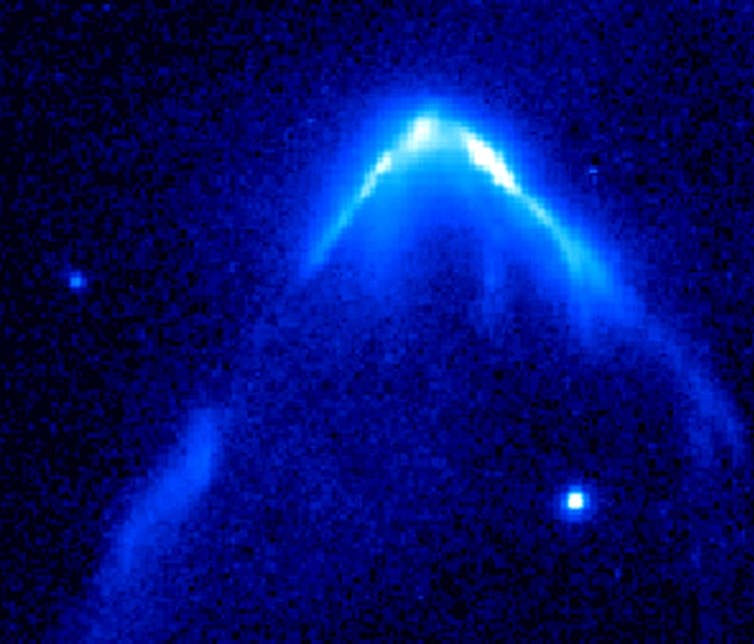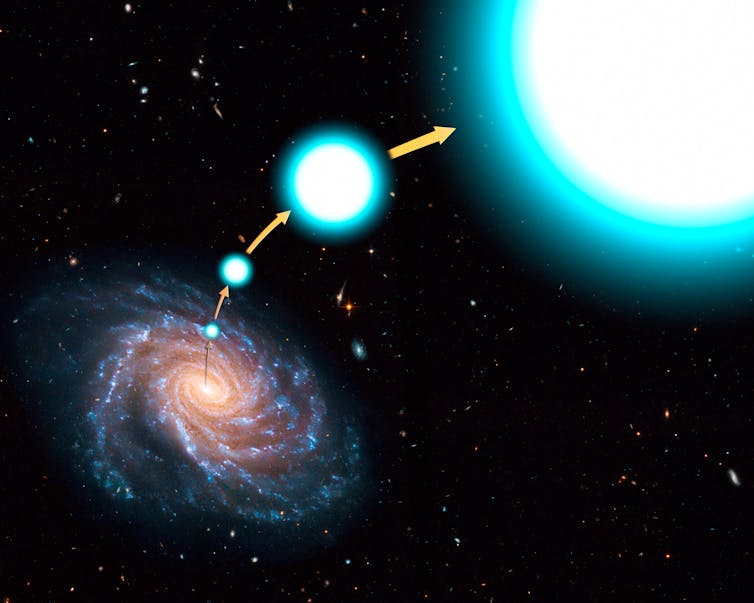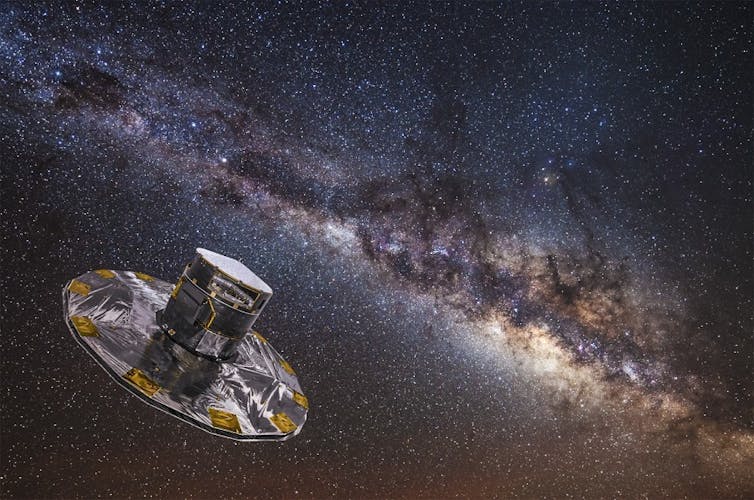Lifestyle
Real shooting stars exist, but they aren’t the streaks you see in a clear night sky

“I see thy glory like a shooting star.”
So says the Earl of Salisbury as he ruminates about the future in Shakespeare’s “Richard II.”

During the English Renaissance, people believed shooting stars were luminaries falling from the heavens and harbingers of calamity. But by the end of the 19th century, scientists had established the truth to be far more mundane. What today are commonly called shooting or falling stars are simply small pieces of rock or dust that quickly burn up upon entering Earth’s atmosphere.
But nature has a surprise for you – shooting stars really do exist.
I am an astrophysicist who studies celestial mechanics – how objects like stars, planets and galaxies move.
From 2005 to 2014, a monumental observing program incorporating the Sloan Digital Sky Survey and telescopes at the Fred Lawrence Whipple Observatory confirmed a new class of stars that move with such incredible speed that they can escape the gravity of their home galaxies.
Astronomers are just beginning to understand these real-life shooting stars – called hypervelocity stars – that zoom through the cosmos at millions of miles per hour.
Spinning stars and slingshots
The story of hypervelocity stars begins in 1988, when Jack Gilbert Hills, a theoretician at Los Alamos National Labs, had an inspired idea: What would happen if a binary star system – that is, two stars that are gravitationally bound to each other and orbit a common center of mass – traveled near the massive black hole at the center of the Milky Way? Hills calculated that the tidal force of the black hole could rend the binary system in two.
Imagine two ice skaters holding hands and spinning around until they all of a sudden let go. The two skaters will fly away from each other. Similarly, when two stars in a binary system are wrenched apart by a close encounter with a black hole, they will fly apart. In such an encounter one star might gain enough energy to be slingshotted out of the galaxy entirely.
Astronomers now know that this is how hypervelocity stars are born.

Theory, observations and simulations
After the publication of Hills’ prescient paper, the astronomy community considered hypervelocity stars an intriguing possibility, albeit one without observational evidence. That changed in 2005.
While observing stars in the Milky Way’s halo, a team of researchers using the MMT Observatory in Arizona came across something most unexpected. They observed a star escaping the Milky Way at nearly 2 million mph (3.2 million kph). This was HVS1, the first known hypervelocity star.
Observations tell part of the story, but to help answer other questions – such as what happens to the companion after it separates from the hypervelocity star – my adviser and I turned to computer simulations. Our models predict that the other star in the former pair is often left orbiting the black hole in much the same fashion as the Earth orbits the Sun.

Another exciting result from these modeling efforts was the discovery that sometimes the two stars can crash into each other. When this happens, the stars may coalesce into one very massive star.

If you were wondering what might befall a planet orbiting one of these stars, we modeled that too. In a short paper from 2012, my colleagues and I showed that the black hole in the center of our galaxy can blast planets out of the Milky Way at nearly 5% the speed of light.
As of today, no hypervelocity planets have been detected, but they very well might be out there, waiting for some happy astronomers to chance upon them.
Not all fast stars leave the galaxy
Utilizing data from the Gaia spacecraft, launched in 2013, my colleagues and I discovered that some of the stars that the astronomy community had previously considered “hypervelocity stars” are in fact likely bound to the Milky Way galaxy.
While this result may sound disappointing, it actually reveals two critical points. First, there are different mechanisms to accelerate stars to high speeds. Today astronomers know of thousands of speedy stars. However, just because a star is moving fast does not necessarily make it a hypervelocity star unbound from the Milky Way. Second, true hypervelocity stars that are escaping the Milky Way may be rarer than previously thought.

The future is bright and fast
I find it beautiful that true shooting stars exist. It’s equally amazing that studying their trajectories and velocities can help answer some of the foremost questions in science today.
For instance, hypervelocity stars could offer clues to the nature and distribution of dark matter in the universe. Hypervelocity stars may also be the key to answering whether there is more than one black hole at the center of the galaxy.
My students are using NASA’s Transiting Exoplanet Survey Satellite to search for planets around these blisteringly fast stars. The discovery of even one planet around a hypervelocity star will forever change ideas of planetary formation and survivability.
These stars are speedy, but slowly they are shedding light on nature’s secrets. While you may not be able to see a real shooting star with your own eyes, you certainly can make a wish upon one.
[The Conversation’s science, health and technology editors pick their favorite stories. Weekly on Wednesdays.]
Idan Ginsburg, Academic Faculty in Physics & Astronomy, Georgia State University
This article is republished from The Conversation under a Creative Commons license. Read the original article.





















